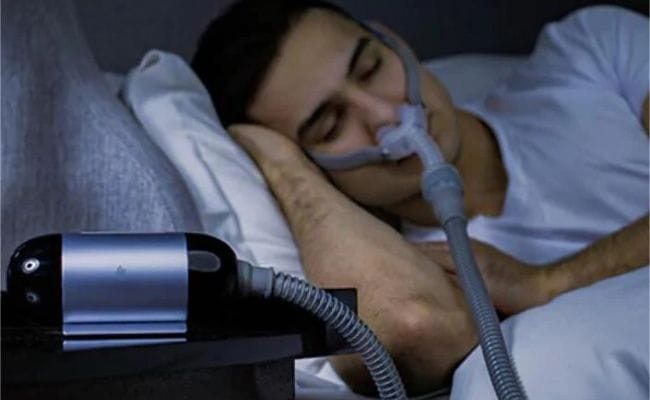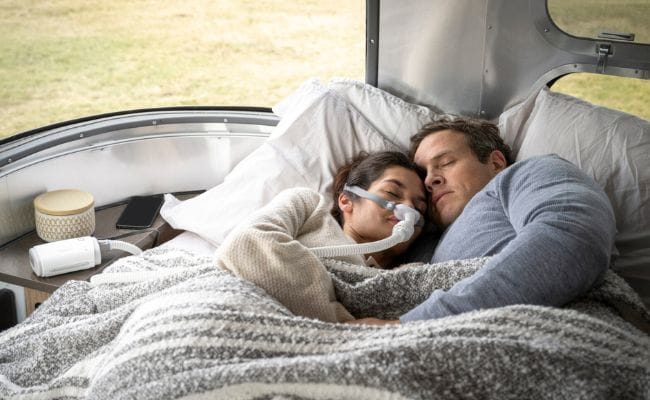
Travel CPAP
Introduction to Travel CPAP
Picture this: you’re on a breathtaking vacation, exploring new cities and indulging in delicious local cuisine. But as the sun sets, your thoughts drift to that familiar concern how will you get a good night’s sleep? For those who rely on CPAP therapy for restful nights, travel can sometimes feel like an uphill battle. Enter the Travel CPAP a compact, lightweight lifesaver designed specifically with jet-setters in mind. These innovative machines ensure that your sleep apnea treatment doesn’t take a backseat while you immerse yourself in new experiences. Say goodbye to sleepless nights and hello to well-rested adventures! Let’s dive into everything you need to know about Travel CPAPs and how they can transform your journeys into serene escapes full of restorative slumber.
Travel CPAP Machines
Portability is a key consideration in the design of travel CPAP devices. These compact devices offer the same therapeutic benefits as traditional CPAPs but come in a smaller, lightweight package.
Many travelers appreciate their convenience and ease of use. They often feature rechargeable batteries, making them ideal for long flights or remote camping trips without access to power outlets.
Most travel CPAPs also have quieter motors and simplified setups compared to standard models. This means you can enjoy restful nights without disturbing fellow travel or hotel guests.
Compatibility is another key advantage. Many machines can operate on varying voltage levels, allowing seamless use across different countries.
Whether you’re an occasional traveler or venture out regularly, a travel CPAP machine ensures that quality sleep remains within reach no matter where your adventures take you.
Why Travel CPAPs are Essential for Frequent Travelers
Frequent travelers often find themselves in unfamiliar environments, which can disrupt their sleep patterns. A Travel CPAP provides the consistency needed for restful nights away from home.
Portable and lightweight, these devices are designed specifically for those on the go. They ensure that users receive continuous positive airway pressure therapy wherever they may roam.
The compact size also makes packing a breeze, fitting easily into carry-ons or luggage without weighing you down. This convenience allows you to focus on your journey rather than worrying about your health.
Moreover, many accommodations might not have suitable sleeping conditions for individuals with sleep apnea. Having a Travel CPAP guarantees that you maintain your routine and get quality rest no matter where you are.
Investing in a Travel CPAP means prioritizing both comfort and wellness during your adventures.
Features to Look for in a Travel CPAP

When selecting a travel CPAP, portability is key. Look for lightweight designs that easily fit into your luggage without adding extra bulk. Compact units with a small footprint are ideal for frequent travelers.
Battery life should also be a priority. Choose models that offer extended battery options or can run on external power sources for those trips off the grid.
Noise level is another crucial feature to consider. A quiet machine ensures you won’t disturb sleeping companions during overnight flights or in hotel rooms.
Ease of use matters as well. Opt for user-friendly interfaces and quick setup processes so you can get to sleep faster after arriving at your destination.
Check if the device comes with versatile features like automatic altitude adjustment, humidification settings, and easy cleaning options to enhance your overall experience while away from home.
Top 5 Travel CPAPs on the Market
When it comes to choosing the best travel CPAP, several options stand out in 2023.
.The ResMed AirMini is a favorite for its compact size and lightweight design. It offers advanced features like auto-adjusting pressure and a built-in humidifier.
.Next up is the Philips Dream Station Go, which boasts an intuitive interface and excellent connectivity options. Its portable battery makes it ideal for long trips.
.The Z1 Auto Travel CPAP packs great performance into a small unit. With its unique PowerShell design, it provides flexibility in power sources.
.Another noteworthy option is the Transcend Mini CPAP. This ultra-portable machine ensures you can sleep comfortably no matter where your adventures take you.
.Consider the Liva Nova Lumiere a versatile model that combines sleek aesthetics with functionality while remaining user-friendly on the go.
Tips for Using and Maintaining Your Travel CPAP

Using a Travel CPAP can enhance your sleep quality, but proper usage and maintenance are key.
Always start by reading the manufacturer’s instructions. Each device may have unique features that need attention. Make sure to pack all essential accessories, like power adapters and filters.
Cleaning is crucial. Regularly wash the mask and tubing with mild soap to prevent bacteria buildup. Rinse thoroughly before using it again.
When traveling, consider carrying a portable sanitizer for quick clean-ups on the go. This ensures you stay fresh while sticking to your routine.
Monitor battery life if you’re using a battery-operated model. Bring extra batteries or a power bank when venturing off-grid.
Keep an eye on humidity levels in different climates; adjusting settings can make a significant difference in comfort during use. Take care of your equipment for optimal performance wherever life takes you!
Benefits of Using a Travel CPAP
Using a Travel CPAP can significantly enhance your quality of sleep while away from home. With its compact size and lightweight design, it easily fits into any luggage without adding unnecessary bulk.
One major benefit is the ability to maintain consistent therapy. This helps prevent disruptions in your sleep cycle, leading to more restful nights no matter where you are.
Travel CPAPs often come equipped with features tailored for convenience, such as built-in humidifiers and quiet operation, ensuring comfort during use.
Moreover, having a reliable device reduces anxiety about managing sleep apnea on the go. You’ll feel empowered to enjoy trips without worrying about poor sleep or health complications.
Many travel CPAP machines offer versatile power options like battery packs which make them suitable for camping or traveling internationally where outlet access may be limited.
Conclusion
Traveling should be an adventure, not a struggle for sleep. With a travel CPAP, you can ensure restful nights no matter where your journey takes you.
These compact devices are designed to fit seamlessly into your travel routine. A good night’s sleep is essential for enjoying new experiences and staying energized on the go.
Investing in a quality travel CPAP opens doors to more destinations and less stress about your health needs. Each trip becomes an opportunity rather than an obstacle.
Embrace the freedom of exploring while maintaining your well-being. Prioritize comfort, rest, and rejuvenation during every adventure you embark upon; it’s key to making memories that last a lifetime.
FAQ:
What is a travel CPAP?
Ans: A travel CPAP is a compact, lightweight version of the standard continuous positive airway pressure device. Designed for convenience, it helps individuals with sleep apnea maintain their therapy while on the move.
These machines are engineered specifically for portability. They often feature smaller dimensions and reduced weight compared to traditional models. This makes them easy to pack in your luggage or carry-on.
Travel CPAPs come equipped with essential functionalities to ensure effective treatment without compromising comfort. Many include features like quiet operation and adjustable pressure settings tailored to individual needs.
This innovative solution allows users to enjoy restful nights anywhere be it at a hotel, camping site, or even during long flights. Maintaining consistent therapy becomes hassle-free, enabling travelers to focus on their adventures instead of worrying about sleep-related issues.
Do I need a prescription for a travel CPAP?
Ans: Travel CPAP devices are designed for convenience, but many users wonder about the necessity of a prescription. Generally, yes, you will need a prescription to obtain one.
This requirement stems from the medical nature of CPAP therapy. A doctor evaluates your specific needs and ensures that you receive the correct settings for effective treatment.
Some manufacturers may offer travel-sized machines without requiring a prescription; however, it’s crucial to consult with your healthcare provider first. They can guide you on whether these alternatives meet your therapeutic requirements.
Moreover, having a prescription allows access to patient support services and insurance coverage options in many cases. This can help ease financial burdens while traveling with essential sleep equipment. Always prioritize health by following proper protocols when considering any device for sleep apnea management.
Can I use a travel CPAP all the time?
Ans: Using a travel CPAP all the time is generally safe and often recommended. These compact machines are designed to deliver consistent therapy, regardless of where you are.
If you’re someone who travels frequently or spends nights away from home, relying on a travel CPAP can help maintain your sleep quality. Many users find that having their device handy offers peace of mind during trips.
However, it’s essential to check whether your specific model meets your daily needs for airflow and pressure settings. Some travelers might prefer their full-sized machine for extended use at home while opting for the portable version only when traveling.
Always consult with your healthcare provider if you’re unsure about making the switch or using it consistently. They can provide personalized advice based on your unique condition and therapy requirements.
What can I use instead of a CPAP while traveling?
Ans: If you find yourself without your CPAP while traveling, there are alternative options to consider. One of the most common substitutes is a nasal pillow or mouthpiece designed for sleep apnea. These devices can help maintain an open airway during sleep, although they may not be as effective as a full CPAP machine.
Another option is using positional therapy. By sleeping on your side instead of your back, you might reduce snoring and improve airflow naturally. Some travelers also explore lifestyle changes such as weight management or avoiding alcohol before bedtime.
For those seeking temporary relief, portable oxygen concentrators can provide supplemental oxygen if necessary. However, it’s essential to consult with your healthcare provider before using any alternatives to ensure they’re suitable for your specific condition.
Remember that these alternatives may not fully replace the benefits of a CPAP but can serve as stopgap measures when you’re away from home. Always prioritize finding ways to get the restful sleep you need while exploring new destinations.




